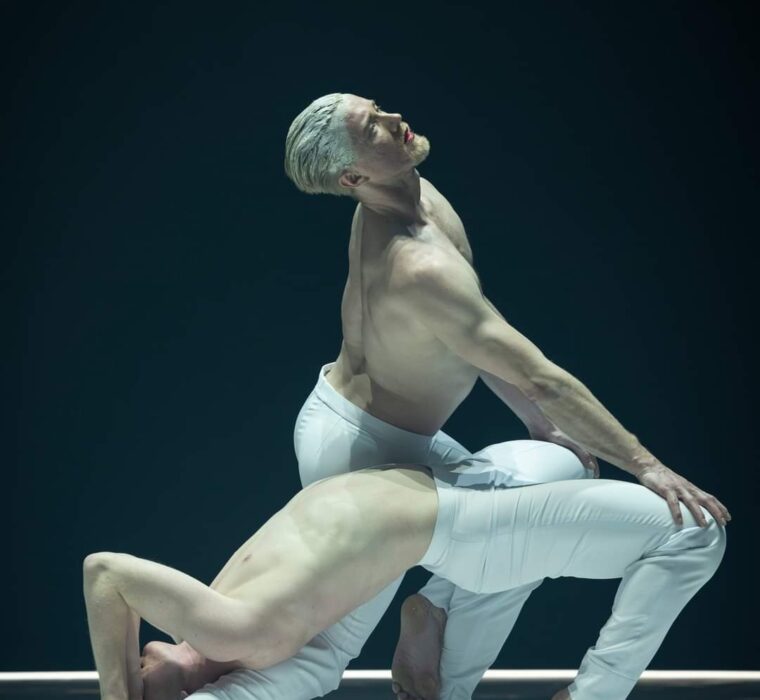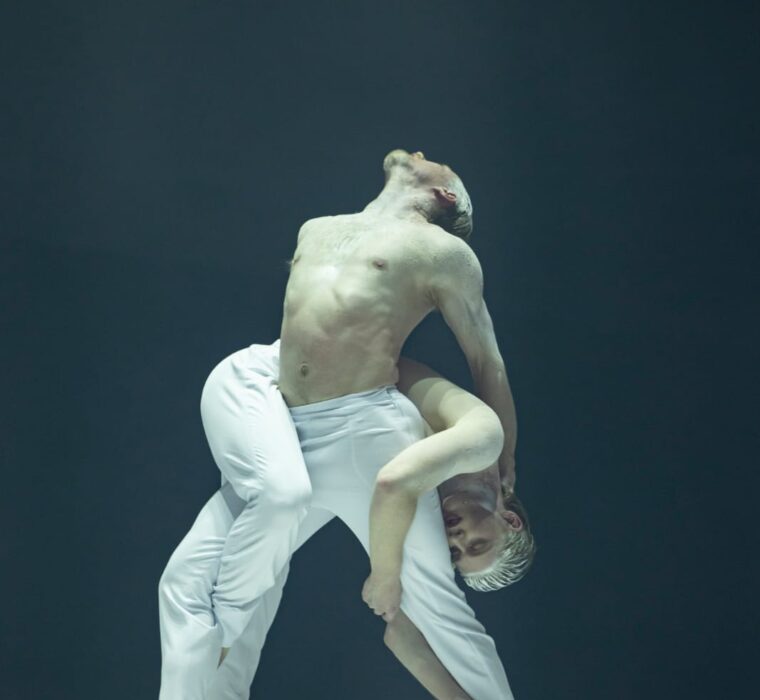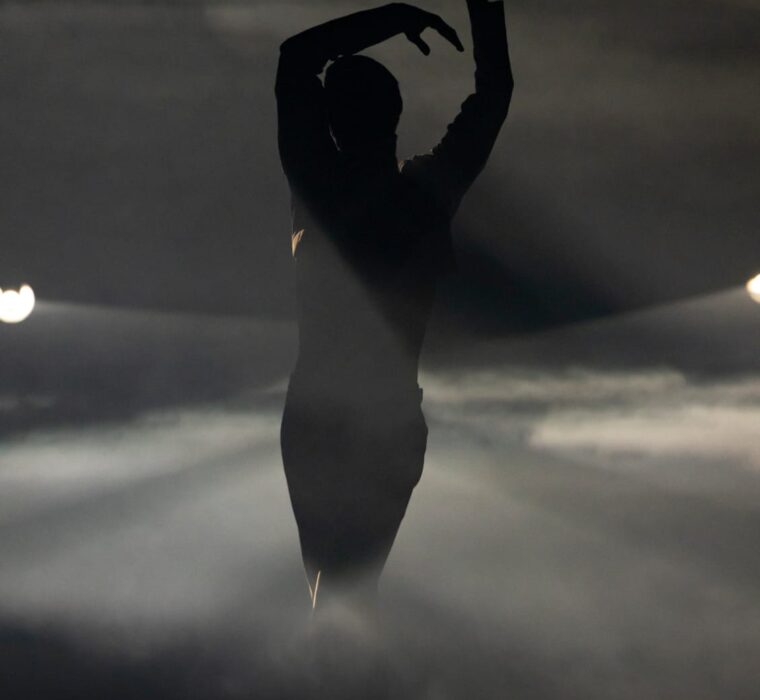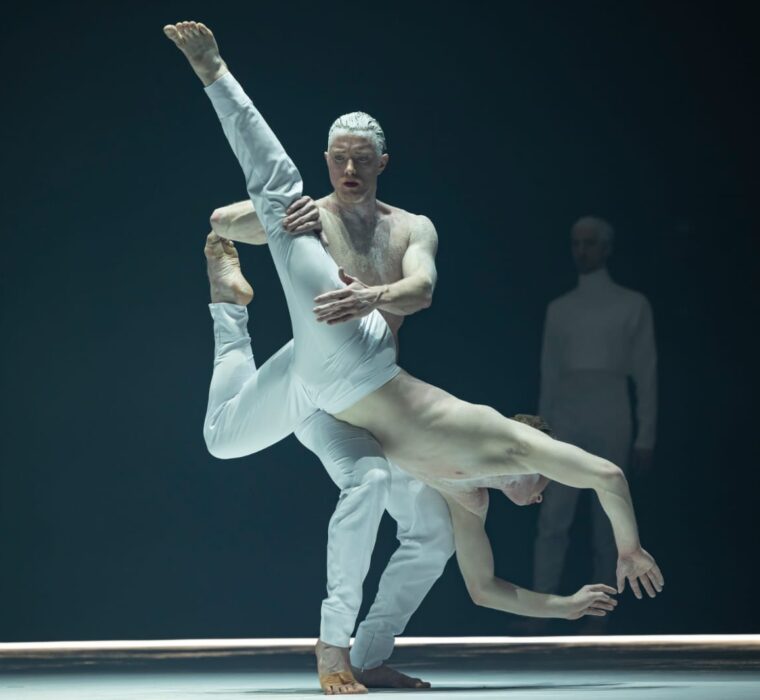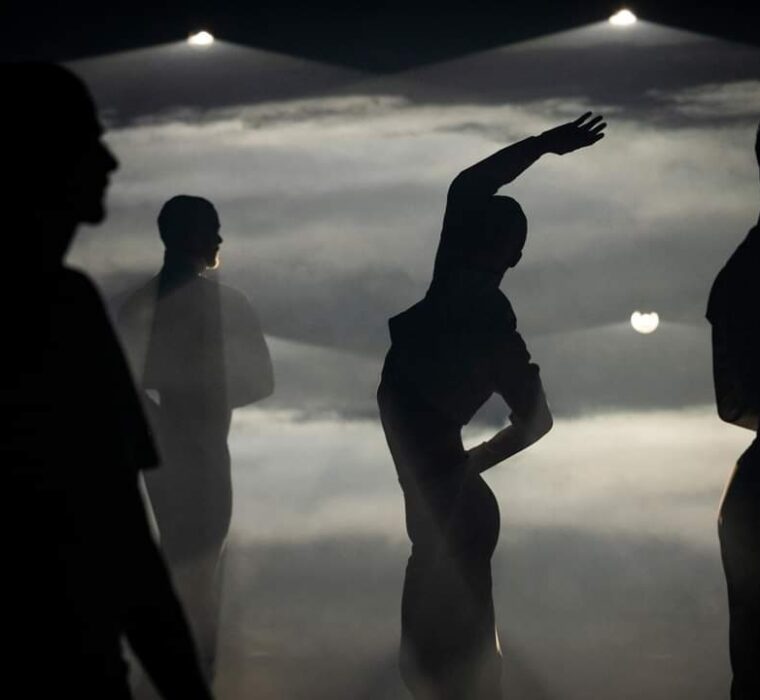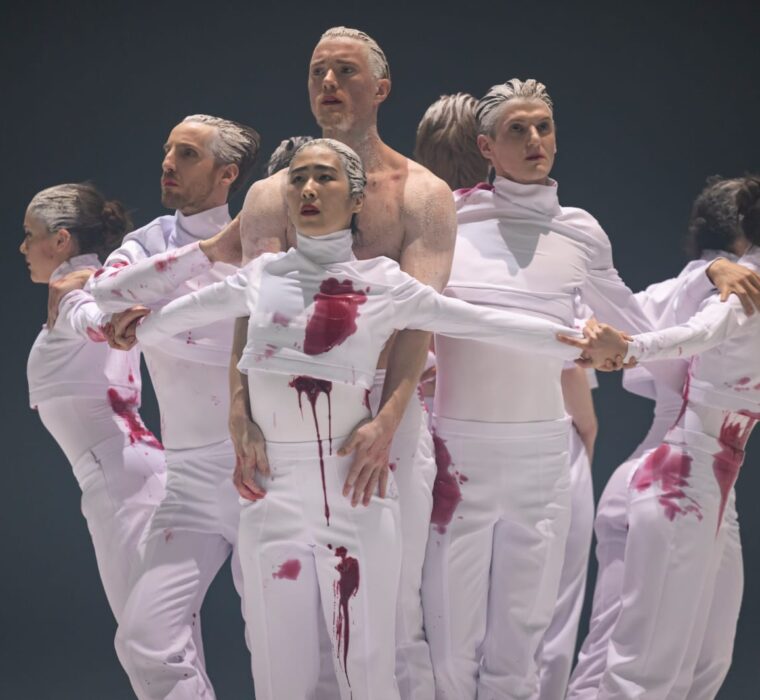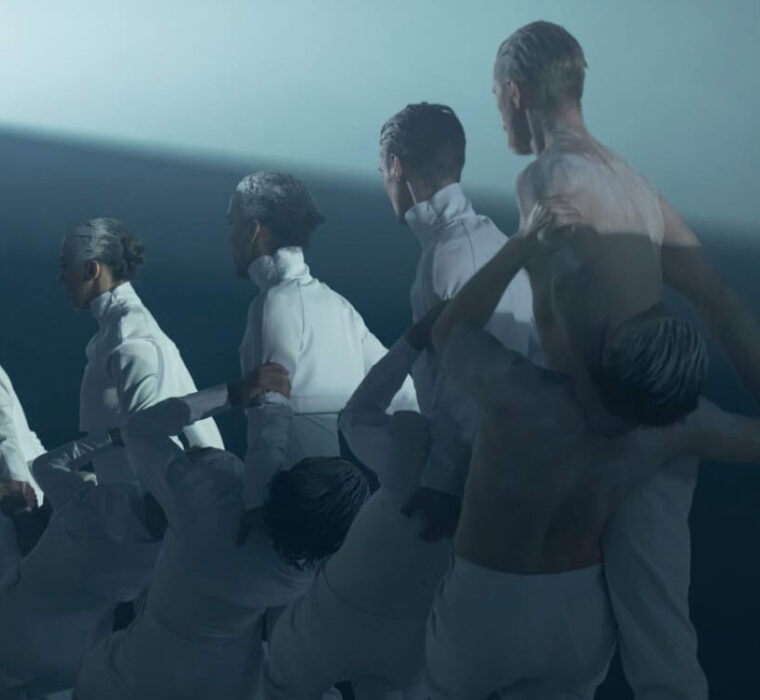“A game begins that seems to unhinge the rules of gravity and balance and that, at the same time, is characterized by a fascinating aesthetic. The bodies come into contact with each other, knot and intertwine in ever new constellations.”
Meister Eckhart once said, “All movement is a form of dying.” If nothing remains still, if life is constantly circulating and moving, even that which we cannot see, then our transit as bodies is but a dance of death, perhaps because any search for a foothold, or for a place of one’s own in space, happens within time. Hence, innocence becomes opaque, sooner or later, calm calls for struggle, the united asks to be fragmented, and even the purest love demands blood.
To move is to fall, and in the flight of that fall, to offer something that does not respond to the passage of time, but rather to present need.
Your stains cannot be washed, Jerusalem, but let me join you with them. I give you my life, now, for a blinding glow.
Was humankind originally good and clean? And, if it was, how was its fall precipitated? Was it unavoidable? Can we sustain it gracefully? Can we turn it into beauty? Would this be an aesthetic act, a political act, an act of love, or are the three the same thing? Can dance contain something like this?
Meister Eckhart once said, “All movement is a form of dying.” Similarly, this spectacle proposes a descent from purity into decadence through movement.
Eleven dancers share a sphere orbiting around itself. On this carousel – a reflection of cosmic mobility, of the circularity that creates and destroys, simultaneously – different landscapes and organisms, take shape, varying in their recognizability. Each image is a response to a search for the essential during the duration of each fall. In light of this premise, a slow, deliberate movement of surgical precision arises, as if the bodies on stage were handling explosive devices: that is their language and their commitment to the truth. The forms they create and abandon, however, eventually succumb to the spinning, turning their original, diamond-like nature into something corrupt, wild, in permanent conflict. Could they/we fall so low that the only possible movement, at the end of the struggle and the fight, is a movement back upwards?
Choreographer Sharon Fridman once again stages his personal research and practice (“INA”), based on gravity, balance and contact. His approach to the creation of new patterns of stability and convergence is, above all, a quest for the authentic in each one, a quality that is only revealed by listening and through cooperation between bodies; that is, through their full availability.
In this new creation Sharon Fridman presents a more synthetic and naked expression of his language, a dissection of the aesthetic that he has invoked throughout his previous work. The stress is now placed on showing, in detail, the journey that form undertakes, from an internal commitment to an external image; beautiful because it is apt; and apt because it is necessary.
CHOREOGRAPHY:
Sharon Fridman
COMPOSITION:
Luis Miguel Cobo
SCENOGRAPHY AND COSTUMES:
Sebastian Ellrich
LIGHTING:
Johannes Paul Volk
DRAMATURGY:
Alban Pinet
CHOREOGRAPHIC COLLABORATION:
Sarah Deltenre, Melania Olcina
TRAINING DIRECTION:
Sarah Deltenre
DANCE ASSISTANT:
Evelyn Knorre-Bogdan
SCENOGRAPHY ASSISTANT :
Lydia Peters
STAGE DIRECTION:
Thomas J. Scharf
MEDIATION AND DANCE WORKSHOPS:
Kerstin Tölle
TECHNICAL DIRECTION:
Markus Pockrandt



